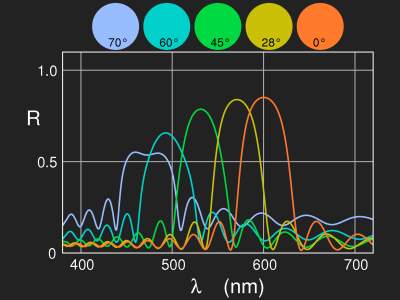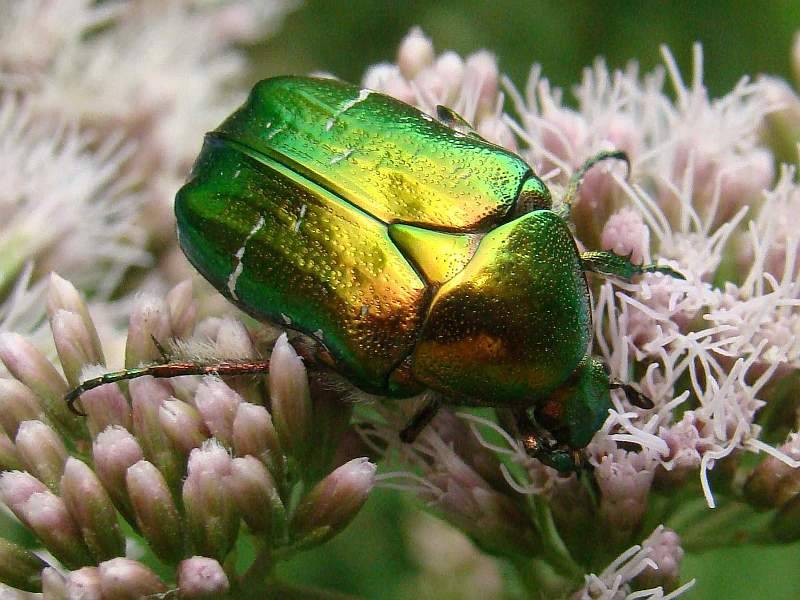|
| How to calculate and render colours – thin films as an example. Without much physics a simple approximation for the colour stimulus is used to demonstrate in some detail how colour is computed for rendering in print or on the screen. The Fortran code. An EPS figure (encapsulated PostScript). |
 | Using the refractive indices and absorption coefficients of the substances, the exact expressions for the reflected and transmitted intensity distributions are obtained in a straightforward way and applied to thin films on a substrate, thin metal films … Sample EPS (gold foil) |

| The colours of thin films and stacked layers. Here now the general case (arbitrary angle of incidence) is treated with the transfer matrix method. Colour as a function of angle of incidence: Sample EPS. Colour as a function of periodicity interval: Sample EPS. |

| Reflection of light by screw structures |
 | This section contains codes and samples based on the Bohren-Huffman Mie scattering subroutine: colloidal metal solutions (gold ruby glass), rainbow, glory, aureole around the sun. |